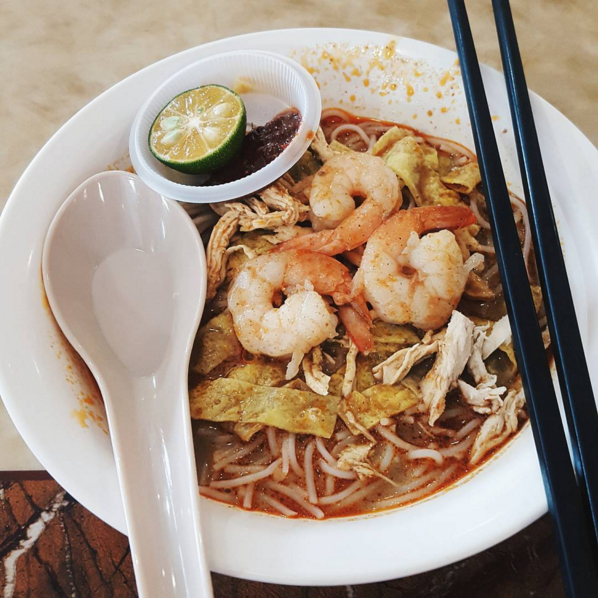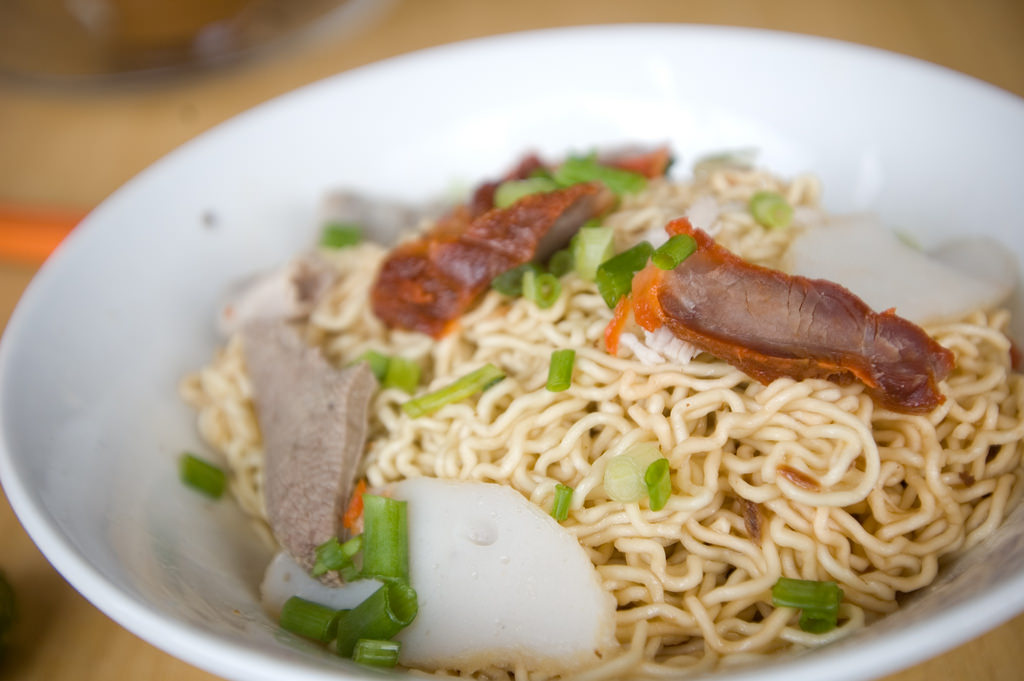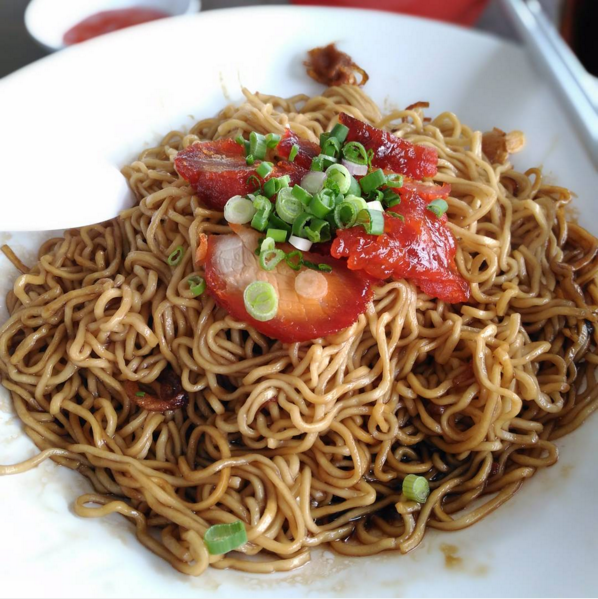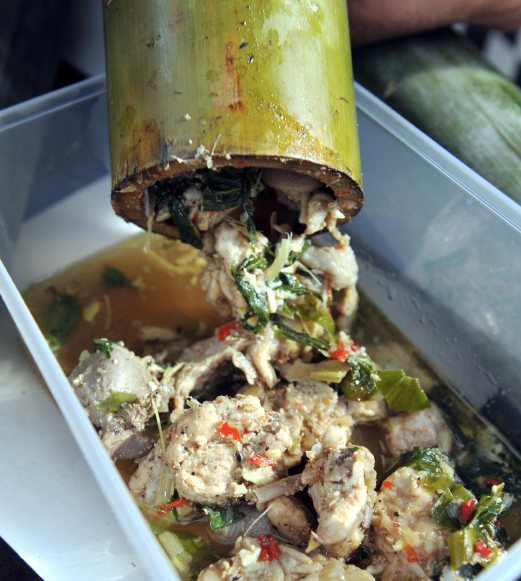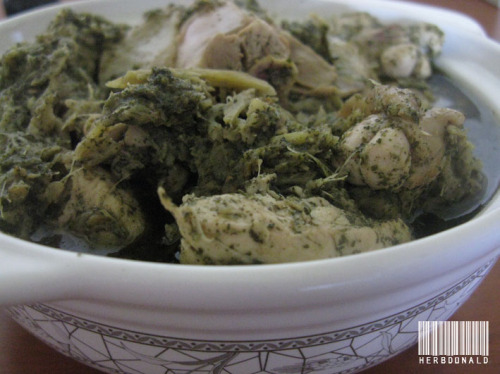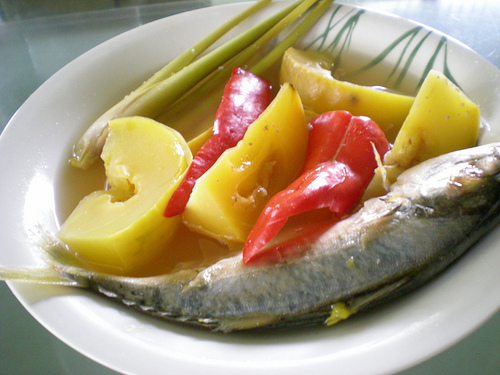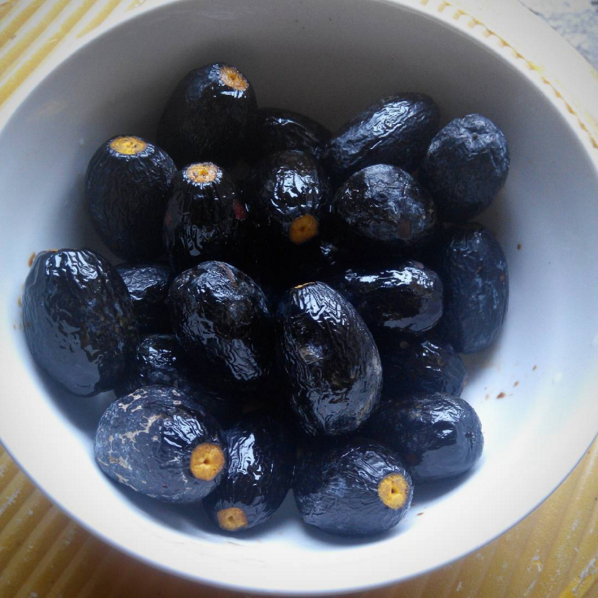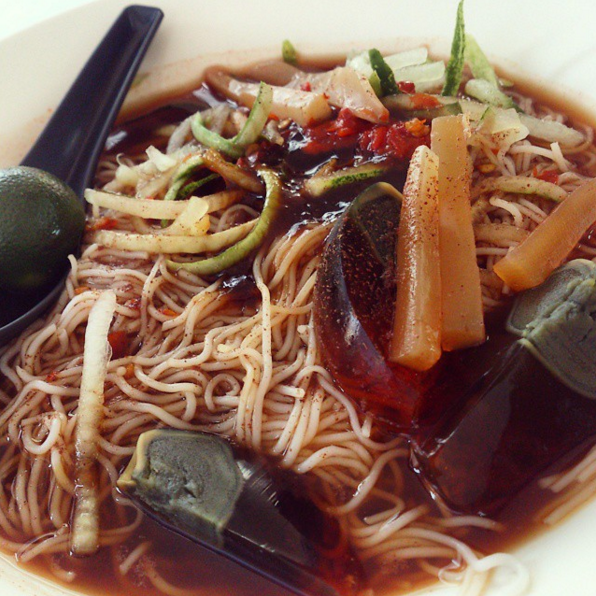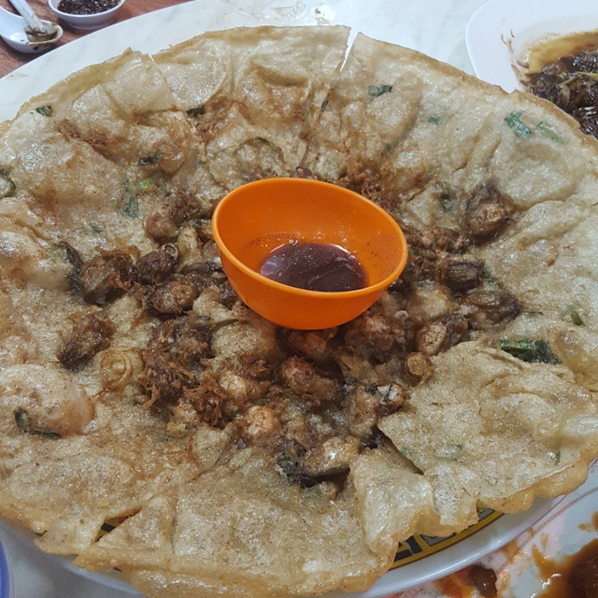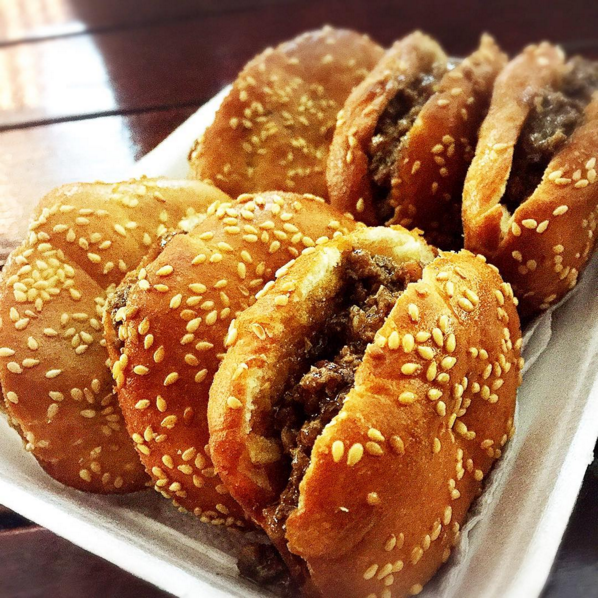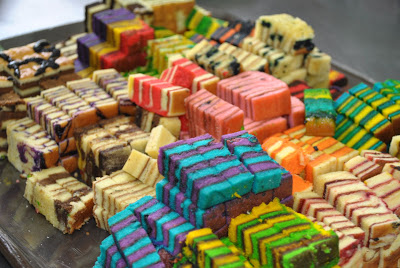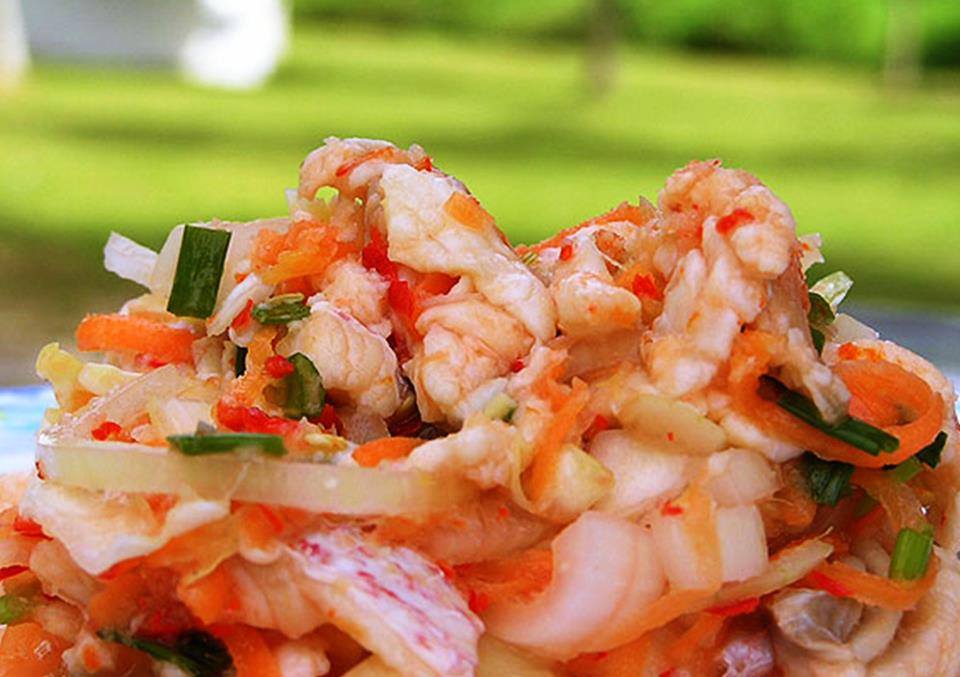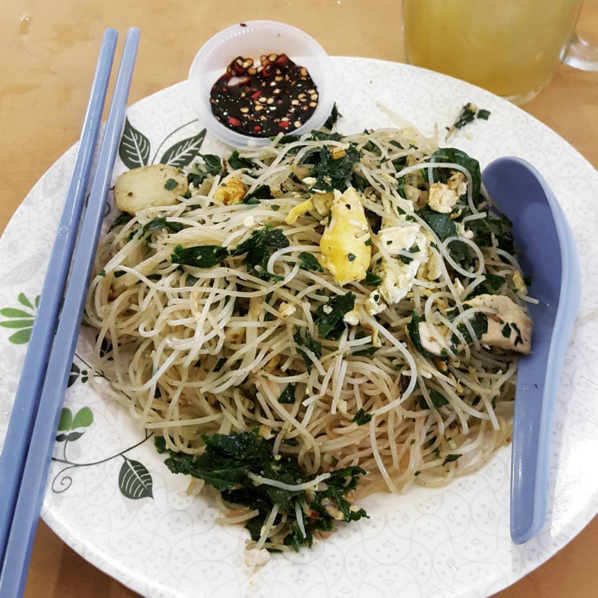One of celebrity chef Anthony Bourdain’s Top 10 dishes, Sarawak laksa consists of a vermicelli rice noodles (bihun) cooked in shrimp-based broth made from sambal belacan, sour tamarind, garlic, galangal, lemongrass and thickened with coconut milk. The dish is served with a general amount of bean sprouts (taugeh), prawns, omelette strips, and shredded chicken.
A simple noodle dish that is available for breakfast, lunch, and dinner, kolo mee consists of yellow egg noodles tossed in a light sauce before it is served with slices of barbecued pork (char siew), chicken cutlets, or minced meat. Non-halal versions might also contain lard.
The dish usually comes in two flavours – plain or seasoned with red sauce. You could also request for it to be seasoned with soy sauce or – in certain places – black vinegar.
3. Kampua mee
Although it looks similar to kolo mee, kampua mee is actually meant to be drier than kolo mee. Typically served with slices of barbecued pork and a bowl of soup, the noodles can either be served plain or tossed in soy sauce or chilli sauce.
4. Midin, a crispy wild jungle fern which can be served as kerabu or stir-fried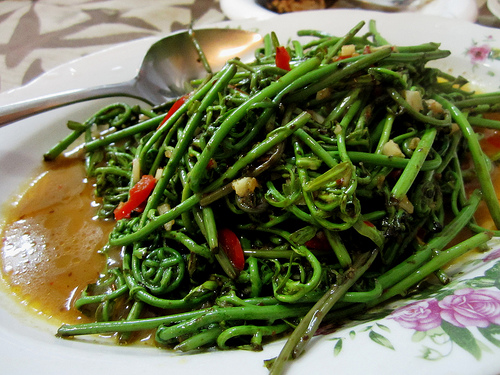
Midin is typically stir-fried with garlic and/or belacan with chilli. Anchovies and salted fish may also be added into the dish, which can be found in most coffee shops that sell nasi campur.
5. Ayam pansuh or manok pansoh
Manok pansoh, an Iban dish, is unique in the sense that its ingredients are cooked in a bamboo. Cut chicken pieces, lemongrass, and tapioca leaves are stuffed into bamboo before it is cooked over an open fire. This cooking method seals in the flavour, which results in juicy and tender chicken with gravy perfumed by lemongrass and bamboo.
6. Manok kacangma
Manok kacangma is a Chinese dish consisting of chicken cooked with a kacangma-based broth. The herb, which also known as motherwort, is believed to be able to ease the effects of menstruation in women. Rice wine may also be added for a more delicate taste.
7. Tomato koay teow
Rice noodles a.k.a. koay teow is served in a tomato sauce-based gravy with vegetables, chicken, and seafood. It is also available with crispy noodles and bihun.
8. Terung dayak, a round yellow fruit, is typically used in sour dishes such as assam sour fish and miscellaneous sour soups
9. Dabai, a seasonal fruit with black skin and yellow flesh
Dabai is a hard fruit, but soak it in warm salt water for 10 to 15 minutes and you’ll get a soft, date-like snack. Fun fact – the seed can be eaten too!
10. Belacan bihun
Belacan bihun consists of rice vermicelli served in a sweet shrimp-based (belacan) broth topped with julienned cucumber, cuttlefish slices, and century egg quarters/halves. You can also have it with a spritz of lime and chilli sauce.
11. Fried oyster pancake or ‘or chien’
Made to be shared, fried oyster pancake is a thin, crispy pancake with oysters concentrated in the centre. It is usually eaten with light soy sauce mixed with pepper.
12. Kompia
A Foochow delicacy, kompia refers to a bun – either soft or crispy – baked in a round stone oven and typically stuffed with meat cooked in a special gravy.
13. Sarawak layer cake or kek lapis Sarawak
Layer cakes may be commonplace for most of us, but Sarawak layer cake‘s multi-coloured, multi-flavoured variety deserves a category of its own!
14. Umai
A Melanau delicacy, umai is made with thin slivers of fresh fish (usually iced instead of frozen) combined with thinly-sliced onions, chilli, salt, and juice from calamansi lime or assam fruit. It is usually served with roasted sago pearls – sago starch mixed with coconut milk, which are then rolled into balls and cooked – instead of rice. The dish is sometimes prepared with cooked prawns.
15. Mani (money) chai bihun or *bihun cangkuk manis*
Mani chai bihun, of Hakka origin, consists of bihun stir-fried with eggs, prawns, chicken pieces, and the sweet mani chai herb.
– Say.com




